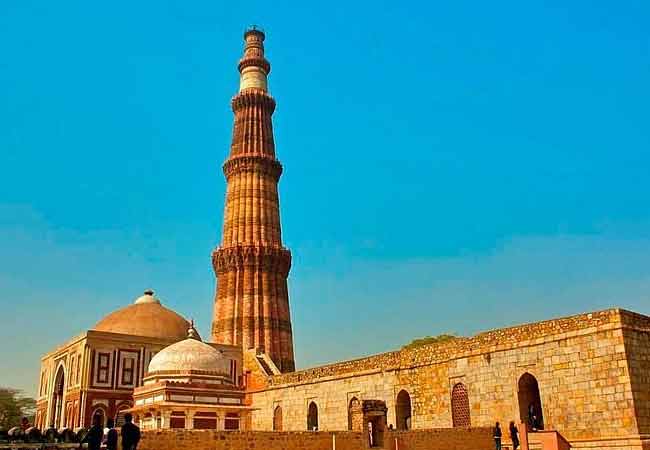Qutub Minar – A Towering Legacy of Delhi’s Glorious Past
The Qutub Minar, a soaring 73-meter-high tower of victory, is one of the most iconic landmarks of Delhi and a UNESCO World Heritage Site. Located in the Mehrauli area of South Delhi, it represents not just a remarkable feat of architectural brilliance but also a significant chapter in India’s rich historical tapestry. Built in red sandstone and marble, the tower is adorned with intricate carvings and verses from the Quran, standing as a testament to Indo-Islamic architecture.
Historical Significance
The construction of Qutub Minar began in 1192 by Qutb-ud-din Aibak, the founder of the Delhi Sultanate. Aibak was a general of Muhammad Ghori, and after his master’s death, he declared independence and became the first ruler of the Mamluk dynasty. Although Aibak initiated the construction, he could only complete the first storey. The subsequent rulers, especially his successor and son-in-law Iltutmish, added more storeys to the structure. Later, in the 14th century, Firoz Shah Tughlaq carried out restoration work and added the fifth and final storey after the tower was damaged by lightning.
The Qutub Minar was built to celebrate Muslim dominance in Delhi after the defeat of the last Hindu ruler. It also served as a minaret from which the muezzin called the faithful to prayer.
Architectural Brilliance
Qutub Minar is a fine example of early Indo-Islamic architecture. Constructed primarily from red sandstone, with some sections of marble added later, the minar is a five-storey tapering structure. The first three storeys are made of red sandstone, while the fourth and fifth storeys are constructed using both sandstone and marble.
Each storey is separated by a projecting balcony, supported by intricately decorated brackets. The tower is richly decorated with floral motifs, geometric patterns, and Arabic inscriptions from the Quran, which enhance its aesthetic appeal.
The diameter of the tower at the base is 14.3 meters, which narrows to 2.7 meters at the top. Its spiral staircase consists of 379 steps, though public access to the interior has been restricted in recent years for safety reasons.
The Qutub Complex
The Qutub Minar is part of the larger Qutub Complex, which contains several other historically significant structures. The most notable among them is the Quwwat-ul-Islam Mosque, the first mosque built in India, which was constructed using materials taken from 27 demolished Hindu and Jain temples. This gives the mosque a unique architectural fusion of Hindu motifs and Islamic design.
Another intriguing feature in the complex is the Iron Pillar of Delhi, which dates back to the 4th century. This rust-resistant pillar stands at 7.2 meters and has puzzled metallurgists due to its ability to withstand corrosion for over 1,600 years.
Other structures in the complex include the Alai Darwaza, the Tomb of Iltutmish, Alai Minar (an unfinished tower intended to be twice the height of Qutub Minar), and various tombs and madrassas from the Sultanate period.
Tourism and Accessibility
Qutub Minar is one of Delhi’s most visited monuments, drawing tourists from all over the world. The site is well-maintained by the Archaeological Survey of India (ASI) and offers a glimpse into Delhi’s medieval past. The complex is open to visitors every day from sunrise to sunset, with a nominal entry fee for Indian and foreign tourists.
The nearest metro station is Qutub Minar Metro Station on the Yellow Line, from where the monument is easily accessible by auto or a short walk.
